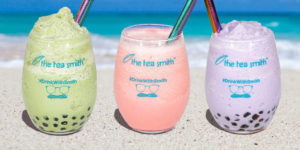Picture this: A customer comes in, asks for a good green tea (probably because they have heard how healthy green tea is), I point them to the menu where pages of green teas are listed, and they turn the page immediately.
They are in search of something familiar to hang on their taste buds. Honestly, I would do the same when confronted with so many names I don’t know how to pronounce. So much flavor is concealed behind names we don’t understand.
Japan and China have been growing and producing good green tea for a very long time. They’ve got the corner on the market, but their nomenclature can be scary to those of us who have never studied Japanese or Chinese.
Just to give you an idea of a few of our Japanese Greens: Genmaicha, Kukicha, Sencha, Sencha Shin-ryoku, Hojicha, Gyokuro and Fukamushi. Chinese Greens on the other hand, give us names we can pronounce but no idea of how they might taste: Dragon Well, Ancient Jade Lily, Gunpowder and Green Monkey King.
While the more familiar words are tucked safely behind these pronunciation speed bumps: Sweet Pomegranate, Moroccan Mint, Strawberry Smile, Minty Green Chai, Cherry Blossom, Jasmine Pearls, and China Jasmine.
There is nothing wrong, of course with staying with what you know you like, but, as your barista, let me remind you that I am here to help. The basics of what you need to know about green tea:
Japanese Greens are steamed. They retain a slightly sharp, grassy flavor.
Chinese Greens are fired and tend to taste more toasty and sweet.
Of course there is more complexity to every cup, but this is a place to start.
It’s late so I’m enjoying the rounded, rich taste of our Decaf Sencha of Japanese origin. Though I normally tend to shy away from decaf teas, this one caught my attention tonight. Be bold in your exploration of teas to tempt your palate.
I promise I won’t make fun of your pronunciation attempts.
Your Barista,
Katie

